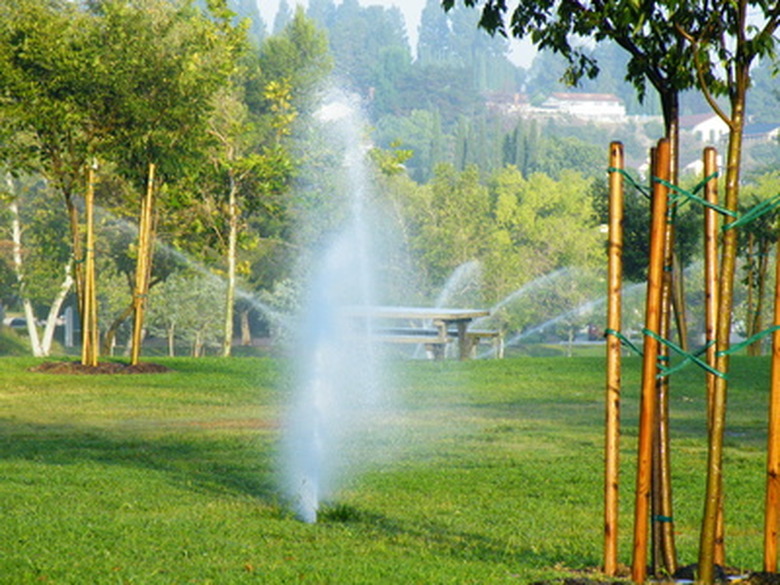History Of Sprinkler Systems
The history of sprinkler systems is linked to municipal water supplies. Sprinklers need pressure to spray water onto crops and gardens. The first city water systems were in Rome, which brought water from distant sources to central locations via aqueducts. Waterwheels in the late 16th century supplied water to London and Paris. Both used gravity to move the water. Though a sprinkler was invented in the first century, it took eight centuries to develop pressurized water systems that could spray water to crops and gardens via sprinkler systems.
Early Sprinkler
Hero of Alexandria invented a steam engine device called an aeolipile in the first century. It worked on the same principles as lawn sprinklers nearly two millennia later. The difference is that they use water power while it used steam for propulsion.
- The history of sprinkler systems is linked to municipal water supplies.
- Though a sprinkler was invented in the first century, it took eight centuries to develop pressurized water systems that could spray water to crops and gardens via sprinkler systems.
Steam Pumps
Steam pumps in the 18th and 19th centuries provided pressurized water systems to cities. The growing middle class demanded ways to deliver water to extensive gardens in regions that got too little rain. Water pushed along by steam pumps emerged from hoses with force enough to spray plants and crops at a distance, but irrigation methods lacked a delivery system.
Water-Propelled Sprinklers
The first water-propelled lawn sprinkler was patented in the United States in 1871 by J. Lessler of Buffalo, New York. Fixed-spray sprinklers were quickly followed by rotating heads, swivel-head models, impact sprinklers, hoses and nozzles. By the 20th century, sprinkler heads threw arches of water from heads made from aluminum tubing, plastic and rubber. Adjustable oscillating heads had a metal arm that sprayed a curtain of water in a fan shape to an area of 600 sq. ft. (55.7 sq. meters). Water moved an elliptical cam to rotate the sprinkler arm and a gear train slowed the speed of the water to one mile an hour. Gardens became common at private homes and public parks in the 20th century, made possible by sprinkler systems attached to hoses linked to municipal water systems.
- Steam pumps in the 18th and 19th centuries provided pressurized water systems to cities.
- The growing middle class demanded ways to deliver water to extensive gardens in regions that got too little rain.
Agricultural Systems
Agricultural sprinkler systems use giant rain-gun sprinklers similar to impact heads but propelled further by higher pressures. Usually above ground and movable via electric or hydraulic technology, they cover entire fields in circles radiating from the sprinkler heads. These systems can also be installed underground.
Underground Spinklers
In the 20th century, municipal sprinkler systems went underground. Small lawns could be watered with an oscillating or drip sprinkler, but large ones often had the sprinkler system plumbing buried and divided into zones. These were put on a timer system programmed to turn on at optimal times. Sprinkler systems operated by electric or hydraulic technology can be simple or elaborate. They may feature retractable sprinkler heads for ease in mowing and be able to compensate for evaporation, runoff and rain. Different sprinkler heads can deliver a fixed spray or a rotating broken stream for grass or a slow drip for more delicate flowers and shrubs.
- Agricultural sprinkler systems use giant rain-gun sprinklers similar to impact heads but propelled further by higher pressures.
- Small lawns could be watered with an oscillating or drip sprinkler, but large ones often had the sprinkler system plumbing buried and divided into zones.
